Salience-Driven Attentional Capture and Sustained Elaboration
When the Lightbulb Lights Up! That Aha Moment Scam Victims Experience
Primary Category: Scam Victim Recovery Psychology
Authors:
• Vianey Gonzalez B.Sc(Psych) – Licensed Psychologist, Specialty in Crime Victim Trauma Therapy, Neuropsychologist, Certified Deception Professional, Psychology Advisory Panel & Director of the Society of Citizens Against Relationship Scams Inc.
• Tim McGuinness, Ph.D., DFin, MCPO, MAnth – Anthropologist, Scientist, Polymath, Director of the Society of Citizens Against Relationship Scams Inc.
About This Article
Salience-driven attentional capture is the mental and neurological response you experience when a realization strikes with such intensity that it overtakes your awareness and becomes the center of your thoughts. Unlike cognitive dissonance, which creates internal conflict and discomfort from holding opposing beliefs, salience-driven capture pulls your focus toward a single emotionally or conceptually urgent insight and holds it there. This process is especially common in scam victims at the moment of discovery, when the truth about the deception suddenly becomes undeniable. Your mind may enter a state of sustained elaboration, constantly revisiting the realization, testing it against past memories, and trying to make sense of what happened.
While this can lead to insight and transformation if supported, it can also become a trap of rumination if left unstructured. Recognizing what is happening in your mind allows you to engage with the experience intentionally, seeking support and applying tools that turn confusion into clarity. This moment of mental capture is not a sign of failure. It is a sign that your mind is fighting to understand and grow from what you now know. When guided carefully, that realization can become the point where recovery truly begins.
Note: This article is intended for informational purposes and does not replace professional medical advice. If you are experiencing distress, please consult a qualified mental health professional.
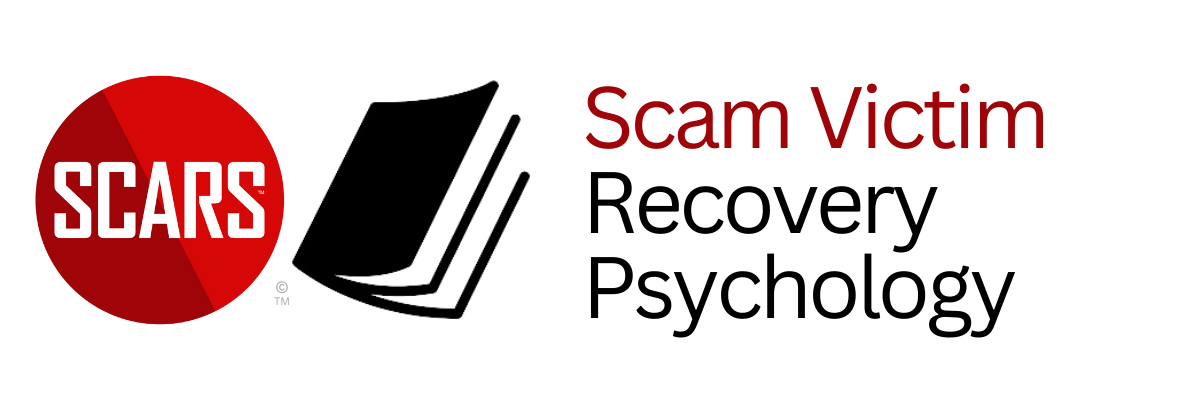
When the Lightbulb Lights Up! Salience-Driven Attentional Capture and Sustained Elaboration – That Aha Moment Scam Victims Experience
Salience-Driven Attentional Capture is when you encounter a piece of information that is both unexpected and emotionally impactful, your brain’s salience network activates. This network, involving areas like the anterior insula and anterior cingulate cortex, flags the information as significant, directing your attention and working memory toward it. This process, known as salience-driven attentional capture, keeps the idea in focus, allowing for sustained elaboration and integration into your existing knowledge framework.
For scam victims, this neurological response can be particularly intense. Discovering the truth about a scam often triggers a profound realization, leading to a cascade of emotions such as betrayal, shame, and anger. The brain’s salience network ensures that this realization remains at the forefront of your mind, prompting continuous reflection and analysis. This sustained attention can aid in processing the trauma and developing coping strategies, but it can also lead to rumination if not managed properly.
Understanding this brain mechanism can help you recognize the importance of addressing the emotional aftermath of a scam. By acknowledging the role of salience-driven attentional capture, you can better navigate the recovery process, seeking support and employing strategies to manage intrusive thoughts and emotions. This awareness empowers you to transform a painful experience into an opportunity for growth and resilience.
Salience-Driven Attentional Capture – A Sudden Shock That Stays in Focus
There are moments when an idea, a fact, or a realization strikes with such intensity that it freezes everything else. It might come from a conversation, a documentary, a passing phrase, or even a simple observation. At first, the experience feels like a surprise. Then it lingers. It does not fade away or get stored for later. Instead, it occupies the mind like a spotlight turned inward, demanding attention, pressing for understanding, and resisting dismissal. This experience is not cognitive dissonance, nor is it simple curiosity. It is salience-driven attentional capture, followed by sustained elaboration.
In this state, the brain flags the information as emotionally or conceptually urgent. What makes something salient can vary. It could be because it contradicts a previously held belief, exposes a hidden truth, or reveals something personally significant. When this happens, a specific brain network known as the salience network activates. This network includes the anterior insula and anterior cingulate cortex, and it functions like an internal alarm system. It does not just signal danger, it flags relevance. It directs attention to what matters right now and suppresses what does not.
The initial experience is often visceral. A person might freeze or lean forward. Breathing might change. Time may seem to slow down as attention narrows. Unlike panic or anxiety, which tend to pull focus toward physical safety or social threat, salience-driven moments are cognitive-emotional events. They activate a sense that something important has been revealed. It does not feel like a passing thought. It feels like a pivot point.
Once captured, attention remains engaged through a process known as sustained elaboration. This is when the mind begins to work over the new information. It turns the idea around, connects it to memories, tests it against existing beliefs, and examines its implications. This is not always voluntary. Many people report that the idea stays “stuck” in their thoughts for hours or even days. It may intrude during meals, resurface during conversations, or cause a person to wake up in the night thinking about it. The mind has decided: this matters. It must be understood.
What Sustained Elaboration Feels Like
During sustained elaboration, the brain’s default mode network often becomes involved. This is the network most active when the mind is wandering or engaged in self-reflection. The new salient idea becomes a seed that the default mode network waters. Thoughts spin out. Connections form. Emotional responses intensify. This might lead to a moment of clarity, or it might cause a period of emotional distress. Either way, the experience does not end when the moment passes; it begins a process (see the images below.)
Some individuals report that these moments feel like having mental tunnel vision. Everything else fades into the background. They might forget to eat or lose track of time. The mind keeps circling the same realization, not out of obsession but because the idea has reorganized their mental framework. It is not just new information. It is a new lens.
This mental process can be exhausting. It requires cognitive energy and emotional regulation. Yet it is also where insight and learning are most likely to take root. Sustained elaboration enables deeper processing than mere awareness. It facilitates meaning-making. It can lead to self-redefinition.
The Scam Victim’s Awakening
For scam victims, this kind of neurological event often happens at the moment of discovery, or shortly afterward. When a person realizes they have been deceived, especially in an emotional or financial scam, the experience is rarely just intellectual. It is existential. It strikes not just what they know, but who they thought they were. That realization, when it hits, is frequently marked by the same qualities as salience-driven attentional capture.
The scam victim may suddenly recognize that the person they trusted was not real. Or they might read an article or watch a documentary that mirrors their own story. The facts themselves may not be new, but something about how they are presented or processed causes the idea to ignite. The body reacts. The mind locks in. The entire system begins to orbit around the shock.
This is often described as a “flood of realization.” One thought leads to another. Memories once sweet become suspicious. Details once dismissed now seem suspiciously clear. The entire history of the scam replays, reinterpreted through the lens of betrayal. The brain is not just remembering, it is restructuring the meaning of those memories. The salience network ensures that nothing else feels as important. And the sustained elaboration ensures that the process does not end quickly.
Reconstructing the Self After Salience Capture
Once the scam victim has entered this state, the mind does not return to its previous condition. Something has changed. The realization creates a new center of gravity. What follows can be productive or painful, depending on how the mind engages with the experience.
Some victims report that the realization becomes overwhelming. It takes over their thoughts and makes concentrating on anything else difficult. This can lead to a state of rumination, when the same distressing thoughts play in loops without resolution. While sustained elaboration is a normal part of processing trauma, if it becomes unstructured, it can turn into a mental trap. The thoughts do not evolve. They just repeat.
Others, however, find that this period becomes the beginning of genuine recovery. The intensity of the realization forces them to re-examine themselves, not to assign blame, but to understand. They begin to notice patterns in their decisions, vulnerabilities in their thinking, or emotional needs that were exploited. This process, though painful, is not regressive. It is forward-facing. They are not trying to erase the past. They are trying to make sense of it.
This is where educational tools and trauma-informed support become essential. Scam victims need structured frameworks to guide their elaboration toward insight rather than guilt. Without direction, the emotional intensity of the moment can collapse into shame. With the right support, it can become a breakthrough.
Why Some Scam Victims Stay Stuck
Not every victim successfully moves from attentional capture to emotional resolution. Some remain in the salience loop. The realization of what happened never fully transforms into understanding. The mind stays locked on the shock, circling it but never breaking through.
This happens when the emotional content of the realization overwhelms the cognitive tools available to process it. For example, a person may realize they were scammed by someone they loved deeply. The emotional contradiction between I loved this person and This person never existed becomes intolerable. The mind resists resolution and instead remains in a state of recursive distress.
Other victims may suppress the realization altogether. The salience of the truth is too threatening to the sense of self. Instead of elaborating, the brain reroutes the attention elsewhere. This avoidance is temporary. The unprocessed realization may return later, often with greater force.
In either case, the ability to move through the salience and elaboration process depends on both internal and external factors. Internally, the victim needs emotional regulation skills, self-compassion, and mental space. Externally, they need language, context, and validation. This is why scam recovery is not just about the truth. It is about guidance.
The Difference Between Salience-Driven Attentional Capture and Cognitive Dissonance
Psychological responses to unexpected or disruptive information often take many forms. Two such responses, salience-driven attentional capture and cognitive dissonance, are commonly mistaken for one another. While they can appear similar on the surface, especially in emotionally intense situations such as scam discovery or trauma recovery, they represent distinct processes with different purposes and neurological pathways. Understanding how they differ can help individuals better identify what they are experiencing and how to respond to it constructively.
Salience-Driven Attentional Capture: A Focused Mental Alarm
Salience-driven attentional capture occurs when the brain reacts to a specific piece of information or event that it deems immediately relevant or significant. This is not just about novelty or surprise, it is about perceived personal importance. A salient stimulus grabs mental attention and holds it, often without conscious permission.
This experience is marked by a sudden narrowing of awareness. The individual becomes cognitively locked on a single idea, memory, or realization. Physiologically, this process is driven by the salience network in the brain, primarily involving the anterior insula and anterior cingulate cortex. These structures are responsible for determining what incoming information is worthy of further attention. When activated, they override competing thoughts and prioritize mental resources for processing the salient event.
The result is a moment, or sometimes hours, of deep mental engagement. The person may reflect continuously on what the realization means, how it happened, and what it implies for the future. This can lead to sustained elaboration, where the brain actively reorganizes memories, beliefs, or self-perceptions in light of the new information.
Examples of this process include:
-
-
-
Learning for the first time that someone trusted was a scammer.
-
Hearing a statement that perfectly explains a long-confusing behavior pattern.
-
Realizing that one’s previous view of an event was entirely wrong.
-
-
These moments are not about internal conflict. They are about mental urgency. The mind is not resisting the new information, it is captivated by it.
Cognitive Dissonance: A Conflict Between Beliefs
In contrast, cognitive dissonance is not about focus or mental capture. It is about psychological discomfort caused by holding two or more contradictory beliefs, values, or perceptions at the same time. The term refers to the mental tension that arises when a person’s actions, thoughts, or feelings clash with their self-concept or existing worldview.
This dissonance produces stress. The brain does not immediately focus on processing the conflicting information in depth. Instead, it tries to resolve the discomfort. The individual may ignore the contradiction, change one of the beliefs, or rationalize the discrepancy. The primary goal is not understanding, it is relief.
Cognitive dissonance often leads to defensive reactions, especially when the contradiction threatens one’s identity or values. People may deny evidence, shift blame, or invent justifications in order to reduce the inner conflict. Unlike salience-driven attention, which intensifies focus on the new information, cognitive dissonance may result in avoiding it.
Examples of cognitive dissonance include:
-
-
-
Continuing to believe a scammer is genuine despite mounting evidence to the contrary.
-
Feeling guilt after lying but insisting it was for a good reason.
-
Experiencing regret after a decision but justifying it by reinterpreting the outcome.
-
-
The discomfort is not rooted in the content of the information, but in the clash between competing internal realities.
Key Differences in Mental and Emotional Function
The distinction between these two processes becomes clear when examining their purpose and trajectory.
Direction of Mental Energy: Salience-driven attentional capture directs mental energy toward the new information. It triggers exploration, elaboration, and reevaluation. Cognitive dissonance directs mental energy away from the contradiction, pushing the individual to eliminate discomfort through avoidance or belief modification.
Emotional Tone: Salience capture may involve shock, awe, or fascination, but it does not necessarily feel internally conflicted. Cognitive dissonance creates psychological tension and distress, which the person is motivated to resolve, often defensively.
Cognitive State: Salience-driven processing enhances focus and opens mental pathways for restructuring meaning. Cognitive dissonance generates mental conflict that often narrows perspective and encourages rationalization.
Neural Systems Involved: Salience-driven attention involves activation of the salience network and, during elaboration, the default mode network. Cognitive dissonance engages the anterior cingulate cortex and prefrontal cortex in a struggle to suppress or reconcile competing cognitions.
Behavioral Outcomes: Salience-driven events often result in deeper insight, lasting perspective shifts, or personal growth. Cognitive dissonance can result in entrenchment, denial, or short-term rationalization, although it may also motivate change if the person chooses to resolve the conflict constructively.
Scam Victimization: When Both Appear Together
In scam trauma, both of these psychological processes frequently occur, sometimes within the same timeframe.
A victim may experience cognitive dissonance when confronted with evidence that the scammer is lying. They may feel internal conflict between their emotional attachment and the facts. This might lead them to deny, justify, or reinterpret the situation in ways that delay full awareness.
Later, when the truth becomes undeniable, through external confirmation, emotional collapse, or retrospective clarity, the brain may shift into salience-driven attentional capture. The realization seizes their awareness and launches a cascade of mental activity. They may become consumed with understanding how it happened, why they missed the signs, and what it means about themselves.
This moment is often described by scam victims as the point everything changed. The scam does not just end, it becomes clear. They stop resisting the truth and start trying to process it. The salience-driven response creates the opportunity for healing, insight, and growth. However, if earlier cognitive dissonance was intense or prolonged, the emotional aftermath may be more severe.
Why This Distinction Matters
For those supporting scam victims or for victims themselves, recognizing the difference between salience-driven attention and cognitive dissonance can shape recovery strategies.
When someone is stuck in dissonance, they need validation, safety, and time. Pressuring them to accept new information can increase resistance. When someone is in attentional capture, they need tools to help structure their thoughts and process emotions. They are open to insight, but vulnerable to overwhelm.
Misinterpreting salience as confusion can lead to inappropriate interventions. Misinterpreting dissonance as insight can lead to premature conclusions. By understanding the neurological and emotional structure of each experience, recovery becomes more targeted and more humane.
Supporting the Elaborative Process in Recovery
When scam victims begin to reflect deeply, their thoughts are often disorganized and overwhelming. Helping them through sustained elaboration involves more than just letting them talk. It means offering tools for structuring thought and managing emotional surges. This may include journaling, guided prompts, trauma education, or therapeutic dialogue.
What matters most is that the person does not stay stuck in a loop of realization without integration. The goal of elaboration is not just to know what happened, but to discover what that means for the self going forward. This includes identity repair, belief adjustment, and emotional closure.
Over time, the original moment of salience loses its sting. It becomes a marker, this is when I began to understand. What once felt like a spotlight becomes a compass. The memory is not forgotten. It is recontextualized. The person is no longer orbiting around the pain. They are building from it.
Conclusion
When you experience a realization so sharp and profound that it stops your thoughts in their tracks, you are not just reacting emotionally. Your brain is responding neurologically. Salience-driven attentional capture is not just a moment of shock. It is a full cognitive event, rooted in the salience network of your brain, which forces a powerful truth into focus and does not let go. For scam victims, this moment often arrives like a lightning strike, raw, disorienting, and unforgettable. It is the point where everything previously rationalized or denied comes into view with painful clarity. You see the scam for what it was, and you begin to see your own mind differently, too.
This process does not fade quickly. What follows is sustained elaboration. Your brain keeps returning to the realization, trying to understand it, make sense of it, reframe past events around it. This is not obsession. It is the brain’s attempt to update its model of the world, your beliefs, your memories, and your identity. That can feel like an emotional flood. It can also feel like slow-motion clarity. You might find yourself mentally circling the same thought over and over, not because you want to, but because your mind is searching for meaning that was lost in the betrayal. This is how deep processing works. It is mentally expensive, but it is also where growth begins.
If you have been scammed, you may already know this sensation. That moment when everything shifts. The person you trusted disappears, the story collapses, and what is left is a painful truth sitting in the center of your awareness. You cannot go back. You cannot unlearn it. And for a while, you may not be able to think of anything else. That is not a failure of willpower. It is a sign that your brain knows something significant just happened. And now it needs time to restructure your understanding around it.
You are not alone in this process. Many victims stay stuck in the loop of elaboration because they have no structure to contain it. Others spiral into rumination because the emotional weight overwhelms their ability to think clearly. Still others retreat into denial, suppressing the realization because it threatens too much. What separates recovery from regression is often the presence of guidance, whether from education, trauma-informed support, or structured reflection. When you are given tools to think through what happened instead of just feeling it, the mind begins to organize itself around insight instead of confusion.
Understanding salience-driven attentional capture matters because it gives a name to something you may have lived through but never fully understood. It validates why that moment hit so hard, and why your brain would not let it go. It also offers direction. That captured focus does not have to become a prison. It can become a launch point. If you engage with it intentionally, through writing, reflection, support groups, or therapy, it can become the start of something larger than pain. It can become the start of meaning.
You are not broken for fixating on the truth. You are not weak for being overwhelmed by what you have learned. You are going through a deep neurological and emotional process designed to help you realign with reality. You are not lost in the realization. You are inside a process that, when guided properly, can move you toward healing. What began as a moment of shock can become a source of strength. That is the power of what your mind is doing. It is not failing you. It is working to rebuild your understanding of the world, one painful, necessary thought at a time.
Reference
-
- Schimmelpfennig Jakub , Topczewski Jan , Zajkowski Wojciech , Jankowiak-Siuda Kamila , The role of the salience network in cognitive and affective deficits, https://www.frontiersin.org/journals/human-neuroscience/articles/10.3389/fnhum.2023.1133367
- Sfera, A.; Thomas, K.A.; Ogunjale, I.A.; Jafri, N.; Bota, P.G. Insomnia in Forensic Detainees: Is Salience Network the Common Pathway for Sleep, Neuropsychiatric, and Neurodegenerative Disorders? J. Clin. Med. 2024, 13, 1691. https://doi.org/10.3390/jcm13061691
Please Rate This Article
Please Leave Us Your Comment Below
Also, tell us of any topics we might have missed.
-/ 30 /-
What do you think about this?
Please share your thoughts in a comment above!
ARTICLE RATING
TABLE OF CONTENTS
- When the Lightbulb Lights Up! That Aha Moment Scam Victims Experience
- About This Article
- When the Lightbulb Lights Up! Salience-Driven Attentional Capture and Sustained Elaboration – That Aha Moment Scam Victims Experience
- Salience-Driven Attentional Capture – A Sudden Shock That Stays in Focus
- What Sustained Elaboration Feels Like
- The Scam Victim’s Awakening
- Reconstructing the Self After Salience Capture
- Why Some Scam Victims Stay Stuck
- The Difference Between Salience-Driven Attentional Capture and Cognitive Dissonance
- Supporting the Elaborative Process in Recovery
- Conclusion
- Reference
CATEGORIES
U.S. & Canada Suicide Lifeline 988
![NavyLogo@4x-81[1] Salience-Driven Attentional Capture and Sustained Elaboration - That Aha-Moment Scam Victims Experience - 2025](https://scamsnow.com/wp-content/uploads/2025/04/NavyLogo@4x-811.png)
ARTICLE META
One Comment
Leave A Comment
Important Information for New Scam Victims
- Please visit www.ScamVictimsSupport.org – a SCARS Website for New Scam Victims & Sextortion Victims.
- SCARS Institute now offers its free, safe, and private Scam Survivor’s Support Community at www.SCARScommunity.org – this is not on a social media platform, it is our own safe & secure platform created by the SCARS Institute especially for scam victims & survivors.
- SCARS Institute now offers a free recovery learning program at www.SCARSeducation.org.
- Please visit www.ScamPsychology.org – to more fully understand the psychological concepts involved in scams and scam victim recovery.
If you are looking for local trauma counselors, please visit counseling.AgainstScams.org
If you need to speak with someone now, you can dial 988 or find phone numbers for crisis hotlines all around the world here: www.opencounseling.com/suicide-hotlines
Statement About Victim Blaming
Some of our articles discuss various aspects of victims. This is both about better understanding victims (the science of victimology) and their behaviors and psychology. This helps us to educate victims/survivors about why these crimes happened and not to blame themselves, better develop recovery programs, and help victims avoid scams in the future. At times, this may sound like blaming the victim, but it does not blame scam victims; we are simply explaining the hows and whys of the experience victims have.
These articles, about the Psychology of Scams or Victim Psychology – meaning that all humans have psychological or cognitive characteristics in common that can either be exploited or work against us – help us all to understand the unique challenges victims face before, during, and after scams, fraud, or cybercrimes. These sometimes talk about some of the vulnerabilities the scammers exploit. Victims rarely have control of them or are even aware of them, until something like a scam happens, and then they can learn how their mind works and how to overcome these mechanisms.
Articles like these help victims and others understand these processes and how to help prevent them from being exploited again or to help them recover more easily by understanding their post-scam behaviors. Learn more about the Psychology of Scams at www.ScamPsychology.org
SCARS INSTITUTE RESOURCES:
If You Have Been Victimized By A Scam Or Cybercrime
♦ If you are a victim of scams, go to www.ScamVictimsSupport.org for real knowledge and help
♦ SCARS Institute now offers its free, safe, and private Scam Survivor’s Support Community at www.SCARScommunity.org – this is not on a social media platform, it is our own safe & secure platform created by the SCARS Institute especially for scam victims & survivors.
♦ Enroll in SCARS Scam Survivor’s School now at www.SCARSeducation.org
♦ To report criminals, visit https://reporting.AgainstScams.org – we will NEVER give your data to money recovery companies like some do!
♦ Follow us and find our podcasts, webinars, and helpful videos on YouTube: https://www.youtube.com/@RomancescamsNowcom
♦ Learn about the Psychology of Scams at www.ScamPsychology.org
♦ Dig deeper into the reality of scams, fraud, and cybercrime at www.ScamsNOW.com and www.RomanceScamsNOW.com
♦ Scam Survivor’s Stories: www.ScamSurvivorStories.org
♦ For Scam Victim Advocates visit www.ScamVictimsAdvocates.org
♦ See more scammer photos on www.ScammerPhotos.com
You can also find the SCARS Institute’s knowledge and information on Facebook, Instagram, X, LinkedIn, and TruthSocial
Psychology Disclaimer:
All articles about psychology and the human brain on this website are for information & education only
The information provided in this and other SCARS articles are intended for educational and self-help purposes only and should not be construed as a substitute for professional therapy or counseling.
Note about Mindfulness: Mindfulness practices have the potential to create psychological distress for some individuals. Please consult a mental health professional or experienced meditation instructor for guidance should you encounter difficulties.
While any self-help techniques outlined herein may be beneficial for scam victims seeking to recover from their experience and move towards recovery, it is important to consult with a qualified mental health professional before initiating any course of action. Each individual’s experience and needs are unique, and what works for one person may not be suitable for another.
Additionally, any approach may not be appropriate for individuals with certain pre-existing mental health conditions or trauma histories. It is advisable to seek guidance from a licensed therapist or counselor who can provide personalized support, guidance, and treatment tailored to your specific needs.
If you are experiencing significant distress or emotional difficulties related to a scam or other traumatic event, please consult your doctor or mental health provider for appropriate care and support.
Also read our SCARS Institute Statement about Professional Care for Scam Victims – click here
If you are in crisis, feeling desperate, or in despair, please call 988 or your local crisis hotline.
More ScamsNOW.com Articles
A Question of Trust
At the SCARS Institute, we invite you to do your own research on the topics we speak about and publish. Our team investigates the subject being discussed, especially when it comes to understanding the scam victims-survivors’ experience. You can do Google searches, but in many cases, you will have to wade through scientific papers and studies. However, remember that biases and perspectives matter and influence the outcome. Regardless, we encourage you to explore these topics as thoroughly as you can for your own awareness.




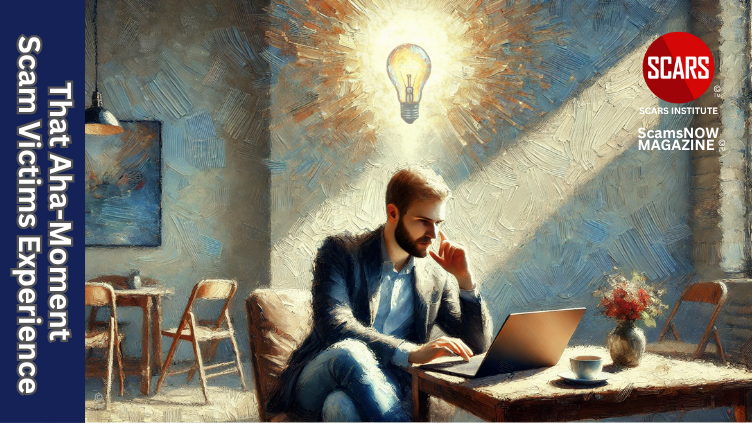
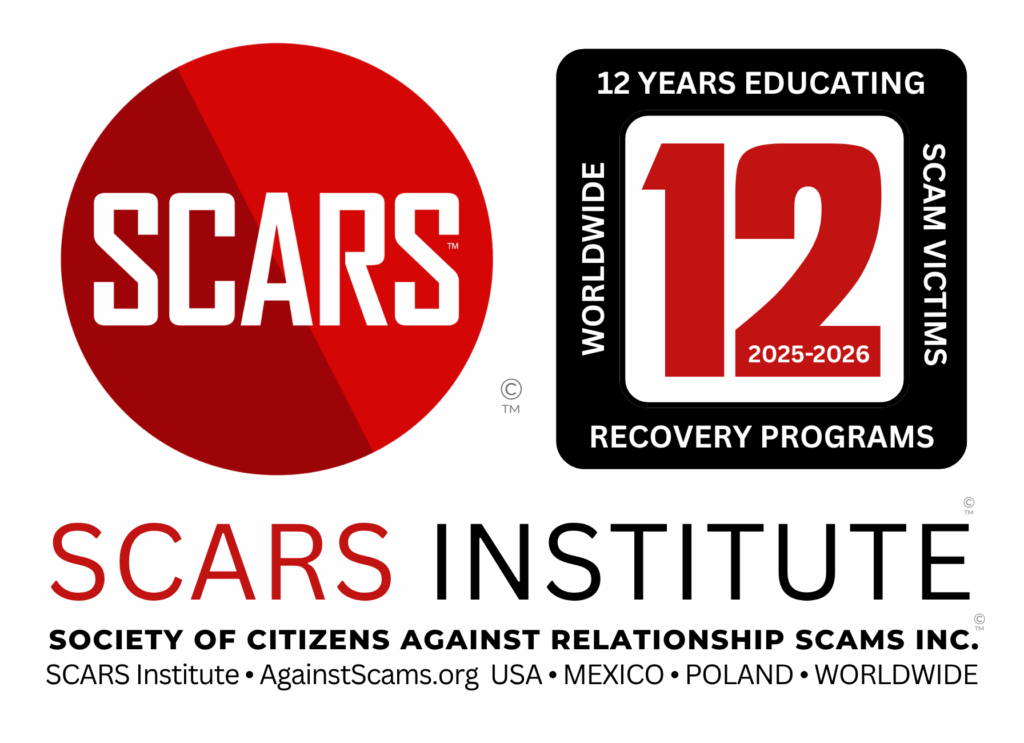

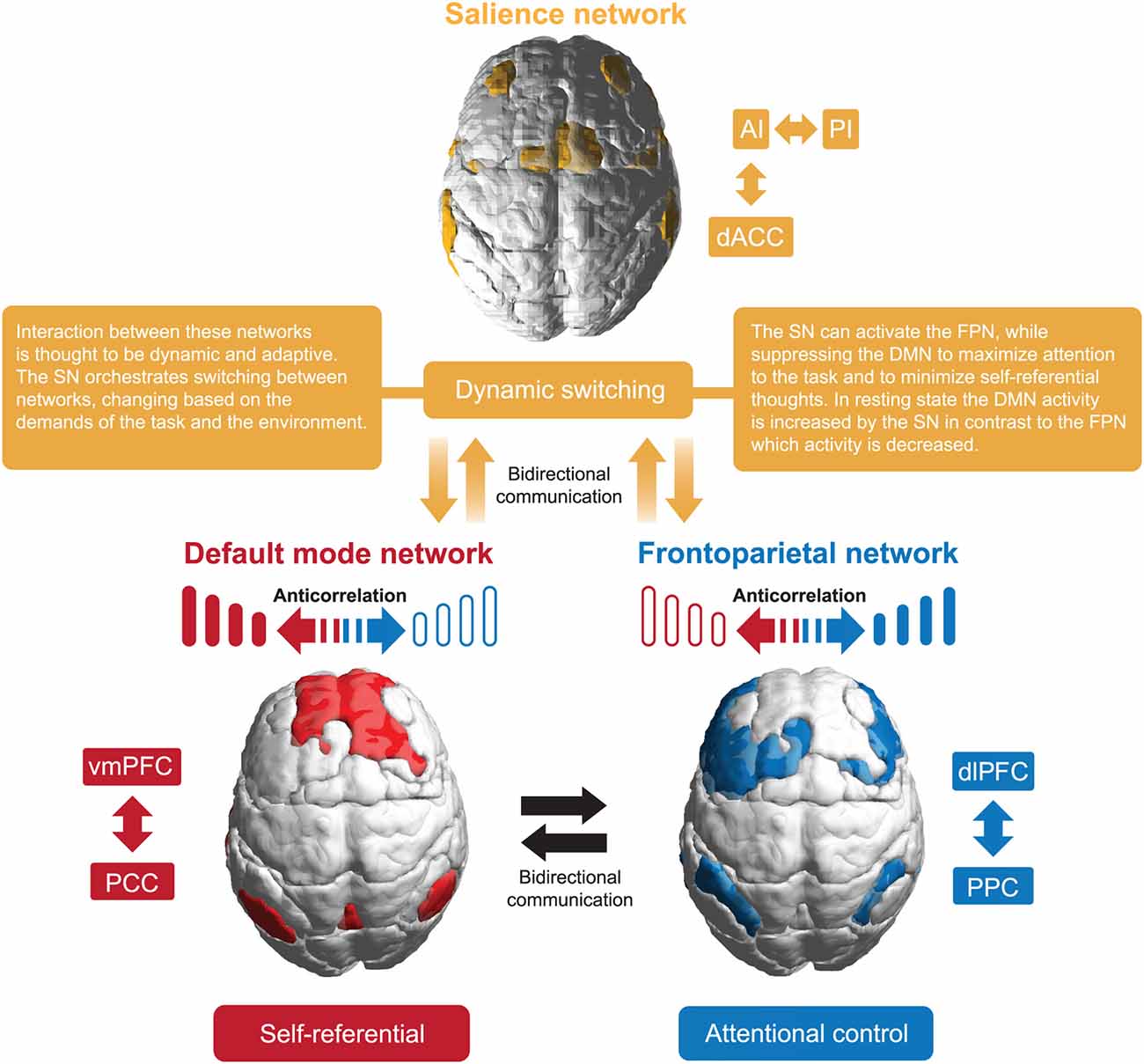
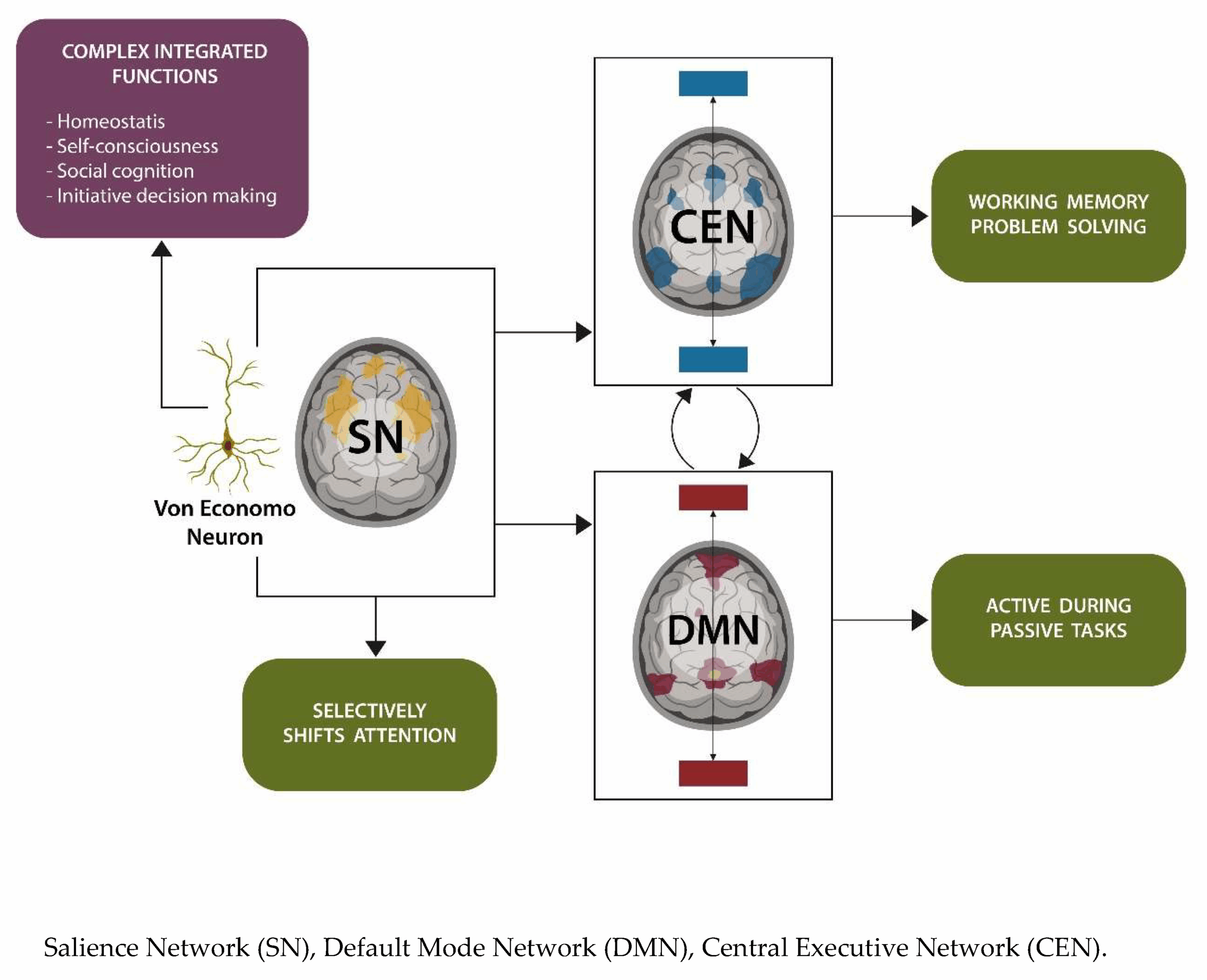



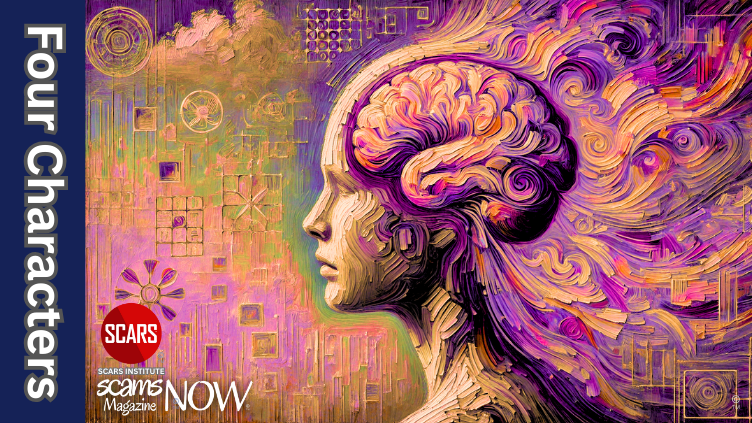





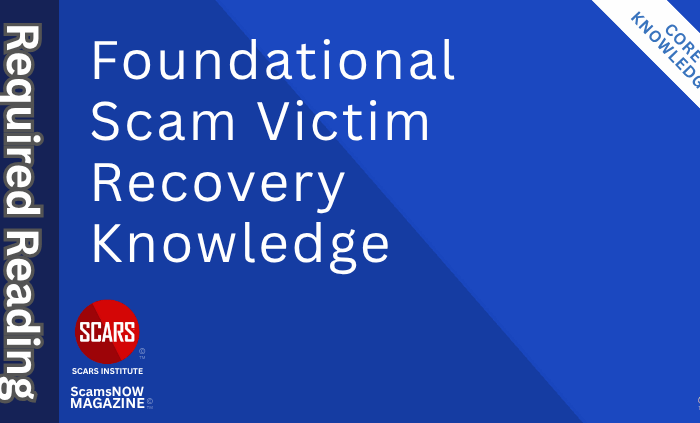


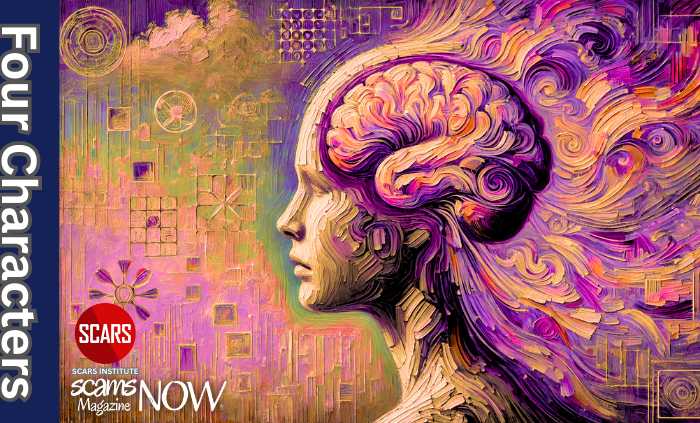




![scars-institute[1] Salience-Driven Attentional Capture and Sustained Elaboration - That Aha-Moment Scam Victims Experience - 2025](https://scamsnow.com/wp-content/uploads/2025/04/scars-institute1.png)
![niprc1.png1_-150×1501-1[1] Salience-Driven Attentional Capture and Sustained Elaboration - That Aha-Moment Scam Victims Experience - 2025](https://scamsnow.com/wp-content/uploads/2025/04/niprc1.png1_-150x1501-11.webp)

The last chat made it clear to me: I was cheated.
Shock.From then on, all my thoughts were directed to one thing, to analyze everything that happened for almost 2 years.
A difficult time of elaborating. With the help of SCARS I was able to get out of the loop and move forward.